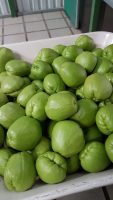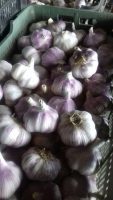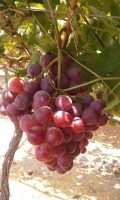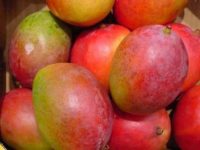Historically, agriculture has been as important in the development of Australia, as it was in the United States. Australia’s traditional dominance in wheat and sheep continues into the 21st century. Recently Australian agriculture has become increasingly diversified. The considerable expanses of arable land have helped Australia to become a leading world exporter of grains, meats, and wool. Both grains (predominantly wheat and barley) and wool markets around the world are dominated by Australian exports. The market for cattle is more regional but is becoming increasingly important globally, given health concerns about European-produced beef. While only about 6 percent of Australia is suitable for crops and pasture, a considerable amount (60 percent) of the land area is suitable for cattle grazing.
Agriculture contributes roughly 3 percent of the GDP and employs about 4 percent of the total workforce directly. While the sector’s contribution to the GDP is small, raw and unprocessed agricultural commodities contribute about a quarter of Australia’s total export earnings each year. Australia exports a great deal more agricultural produce than it imports. In 1998 agricultural exports from Australia were estimated at US$15.14 billion, in comparison to the US$3.11 billion worth of agricultural imports for the same year. The main agricultural crops grown in Australia are wheat, coarse grains (barley, oats, sorghum, maize, and triticale), rice, oilseeds (canola, sunflowers, soybeans, and peanuts), grain legumes (lupins and chick peas), sugarcane, cotton, fruits, grapes, tobacco, and vegetables. The main livestock production is in sheep (wool and lamb), beef, pork, poultry, and dairy products. Exports account for over 90 percent of wool and cotton production, nearly 80 percent of wheat, over 50 percent of barley and rice, over 40 percent of beef and grain legumes, over 30 percent of dairy products, and nearly 20 percent of fruit production.
The distribution of agricultural production in Australia is largely determined by the physical environment and climate. The traditional large farm system of wheat and sheep production is spread fairly uniformly between parts of New South Wales, Victoria, South Australia, and Western Australia. Queensland, New South Wales, and Victoria produce the majority of beef, and New South Wales has the largest and most numerous poultry farms. Sugarcane and large-scale vegetable production occurs almost entirely in the tropical state of Queensland, while cotton is produced in both New South Wales and Queensland. Tropical fruits, such as mangoes and bananas, are grown in parts of New South Wales, Queensland, Western Australia, and the Northern Territory.
A notable characteristic of Australian farming and agricultural production is the extent to which net farm income varies from year to year. Australia’s weather is subject to extreme fluctuations, which has an impact on annual production and ultimately on farm income.
Farm sizes range from relatively small part-time farms to operations of more than 5000 hectares. In general, Australian farming is characterized by large scale, highly mechanized and efficient operations, one of the key reasons why only a small percentage of the workforce is employed in this sector. Environmental factors have long been ignored in the production of agricultural commodities due to their importance to the economy. At the beginning of the 21st century, however, Australia is forced to pay more attention to the growing evidence of environmental stress and degradation caused by farming. In the past, the agricultural sector carried considerable political weight, being represented by the Labor and National political parties. Currently, there is increasing political pressure from urban residents to remove most subsidies and other forms of protection given to farmers. Australian farmers already do not receive many of the subsidies given to farmers in the United States and Europe.

 United Farmers Group is a division of Machuca International Inc., a company owned by the Machuca family. For the past 35 years Alex Machuca has built a business that has expanded to include a vast array of Citrus exotic tropical fruits and vegetables from a myriad of countries around the world.
United Farmers Group is a division of Machuca International Inc., a company owned by the Machuca family. For the past 35 years Alex Machuca has built a business that has expanded to include a vast array of Citrus exotic tropical fruits and vegetables from a myriad of countries around the world. 








